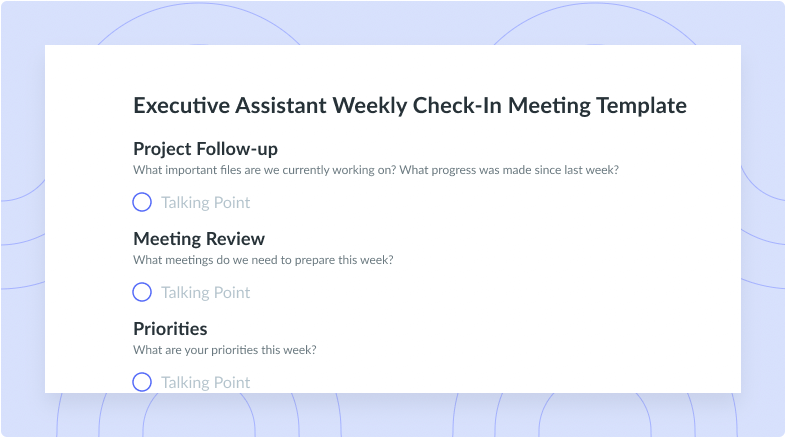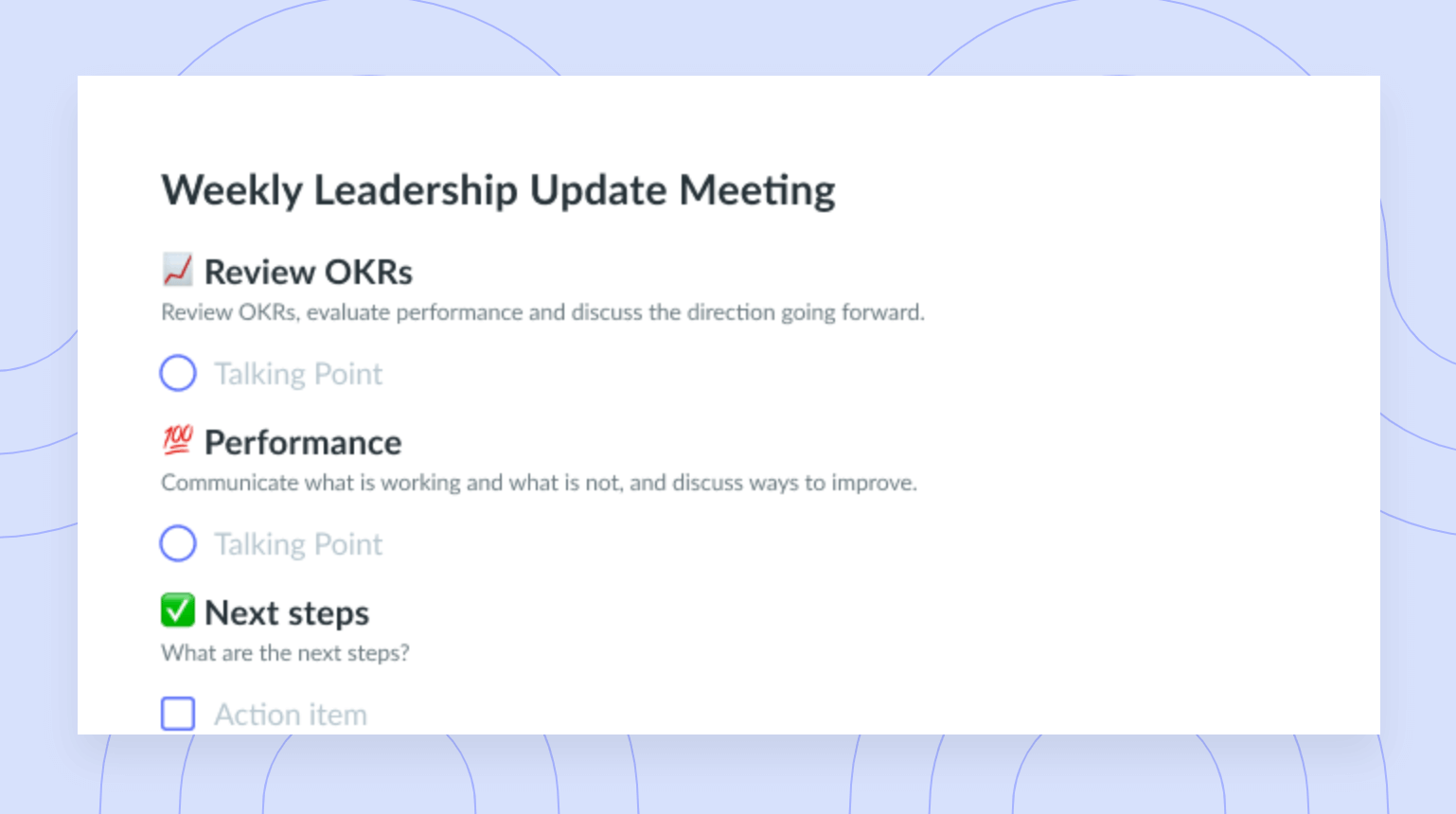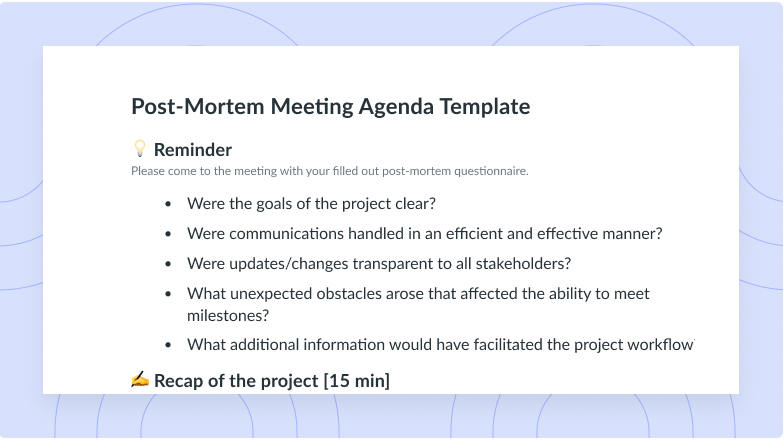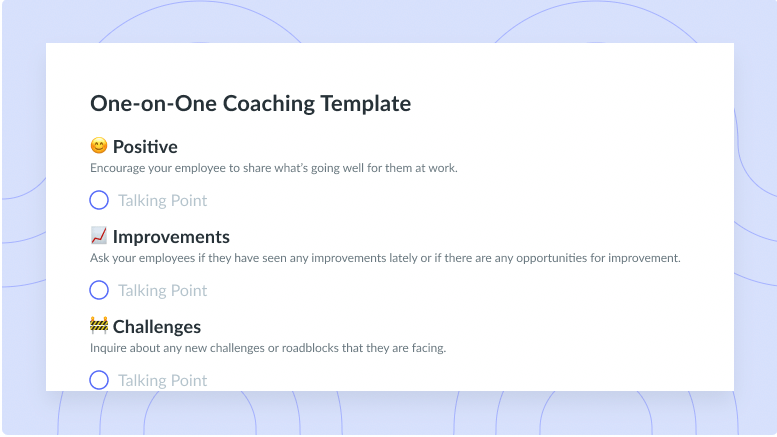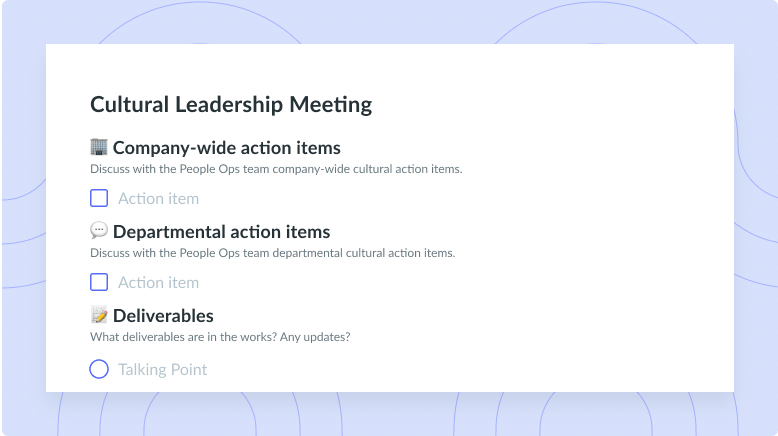Mind Mapping Tips for Better Meeting Management
Learn everything you need to know about mind mapping for better meeting management here, including 6 mind mapping tips!
When it comes to mind mapping, the possibilities are endless. Whether you’re in early-stage brainstorming or late-stage reflection, mind mapping can help you turn the thoughts swimming in your head into a concrete action plan. The best part? Mind mapping is a digital superstar thanks to mind mapping software. It’s a top-notch meeting management tool for an on-the-go professional.
Keep reading for some mind mapping tips. You’ll learn when and how to use mind maps to manage your next meeting.
- What is mind mapping?
- What makes an effective meeting?
- What makes a good mind map?
- Why use mind maps to manage a meeting?
- 6 mind mapping tips for better meeting management
What is mind mapping?
Mind mapping, which the author Tony Buzan popularized, creates a visual representation of your thought process. You’ll start with a single word in the middle of a fresh page and use that word as a launchpad for new ideas. As you brainstorm, you’ll build off your original idea – literally. You’ll draw branches to connect new words or short phrases with one another.
What makes an effective meeting?
In any meeting, it can be tricky to figure out how to make the most of your team’s time together. The following are some key ingredients for a knockout meeting.
- Well-prepared presenters
There are few things worse than watching someone else wing it and fail. To avoid this in your next meeting, make sure everyone who’s speaking is on the same page. Before the meeting, set expectations about what they’re going to cover, how long it’ll take, and any support they’ll need from you.

Take control of your meetings
Collaborate on meeting notes, foster accountability with action items, and grow with meaningful feedback. Try Fellow today!

- A thorough meeting agenda
Drafting a meeting agenda before your meeting can help you narrow down your focus. During the meeting, your agenda can keep you and your team on track as you jump between topics. A meeting agenda will also give everyone a good idea of how long they should speak for. Think of an agenda as a table of contents for the book that is your meeting. Before your team cracks the spine, they should see the chapters.
- Keeping things moving
When you’re managing a meeting, it’s your job to crack down on challenges like people who talk too much in meetings. While you don’t want to rush anything, you should be sure that you stick to the agenda and respect each other’s time. Telling your team their speaking time in advance can keep your meeting from falling behind.
- Reminding your team of its goals
While the action items on your agenda are definitely important, so too are your long-term goals. In some way or another, your meetings should always tie into your mission and vision statements. Think about how your agenda can reflect your team’s big-picture objectives as you put it together.
- Tracking your progress
What good are goals – big or small – if you’re not working toward them? After each meeting, consider your team’s progress. First, think about both the micro-level of the meeting: Did you address every item on your agenda? After that, think macro and look at your long-term goals – do you see your team making progress toward them? Reflect on whether your meeting agenda flowed well, and address any hiccups that you or your team might have faced.
What makes a good mind map?
A good mind map will be engaging, creative, and easy to follow. It’ll have a meaningful word or central image at its (literal and figurative) core, but it won’t be all about the middle. A good mind map can reveal the hidden links among your ideas.
There’s no one-size-fits-all method for effective mind mapping. Instead, just think about how you learn best and try to adapt those strategies to making a mind map. If you’re a visual learner, you can add images or drawings to mind maps. If your ideas fit snugly into a few categories, play around with different branch colors for different topics.
Above all, a good mind map has to work for you. Keep your learning style in mind, and don’t be afraid to think outside the box.
Why use mind maps to manage a meeting?
Sometimes, you have to think more to say less. Mind mapping before a meeting can help you cut out the fluff and choose a narrow, meaningful focus for your discussion. When you plan and run your meeting with mind mapping, your team can maximize every minute together.
6 mind mapping tips for better meeting management
Put mind mapping to work before, during, and after your next meeting with the following strategies.
- List action items
- Set intentions
- Invite the right people
- Anticipate questions
- Take notes
- Map out key takeaways
1List action items
If your plate is loaded, you can create a mind map to find the most important action items for your next meeting. When choosing your central topic for your mind map, you can figure out your priorities and use them to build a meaningful agenda. While you probably can’t address every little task in one meeting, your mind map can show you which ones to tackle first.

2Set intentions
A mind map can help you figure out why you’re choosing to invite your team members to the same place at the same time. You can also use a mind map to think about the ideal outcome of the meeting and how you’ll know whether it was a success. All of this creative brainstorming can help you define and settle on your meeting purpose.
3Invite the right people
It’s a meeting, not a party – you should keep it small. You can use mind mapping techniques to figure out who’s most important for your meeting and only invite the key players.
Charlie Gilkey, author of Start Finishing, suggests keeping your meetings small. “After about 5 people in the meeting, it switches from focused work, problem-solving, and planning to updates and discussion,” he says. “For each person at the meeting, consider why they *don’t* need to be there.”
4Anticipate questions
Mind mapping can draw attention to some of the murkier concepts in your meeting and help you think up some answers to likely questions. As you’re mapping out your meeting, think about where you or your team members might get stuck. Then, set a plan for addressing any concerns.
5Take notes
During a meeting, mind mapping can be a great companion – or replacement – for meeting minutes. Whether for tracking attendance, assigning meeting action items, or flagging in-the-moment issues, mind mapping can help you take notes in real time. Once your meeting is over, your mind map can be an easy-to-read record of what you covered and what still needs attention.
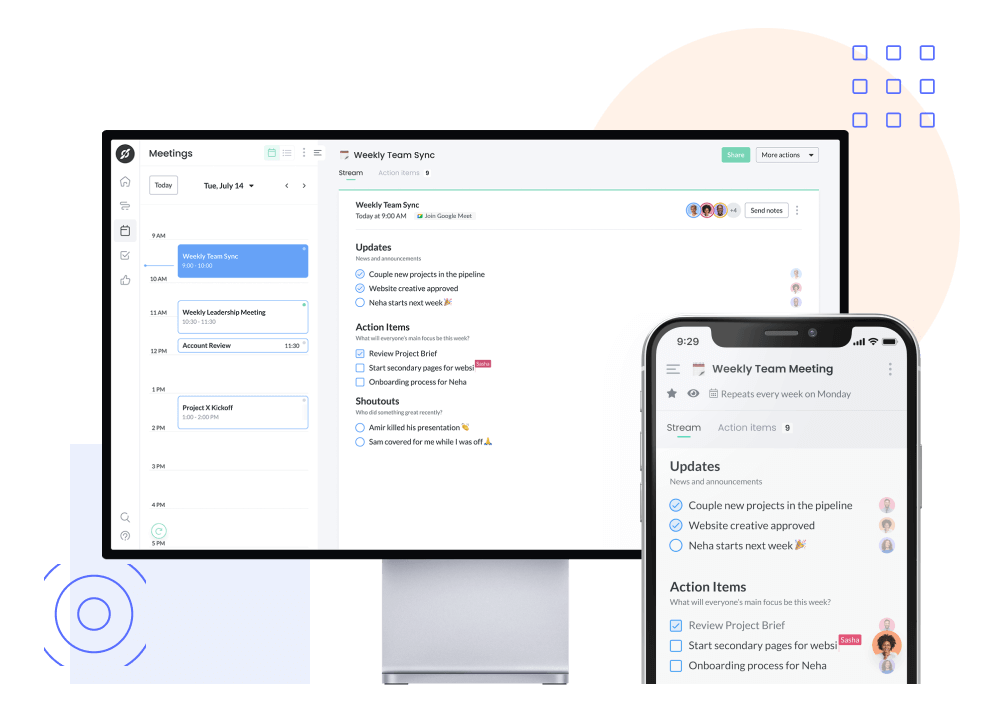
6Map out key takeaways
Who says mind mapping has to happen alone? At the end of your meeting, invite your team to map out the highlights with a collaborative digital mind map. When mind mapping with your team, you can learn what they liked the most – and what you should repeat or nix in future meetings.
Master meeting management with Fellow
Mind mapping is the ultimate multipurpose tool, and it’s flexible enough to use at any and every stage of your meeting. Alongside your mind map, Fellow can give you everything you need for your next meeting. With tools for noting action items, talking points, and team ideas, Fellow can get your meeting running as smooth as butter. With Fellow at your side to manage your next meeting, mind mapping will be easier than ever before.










